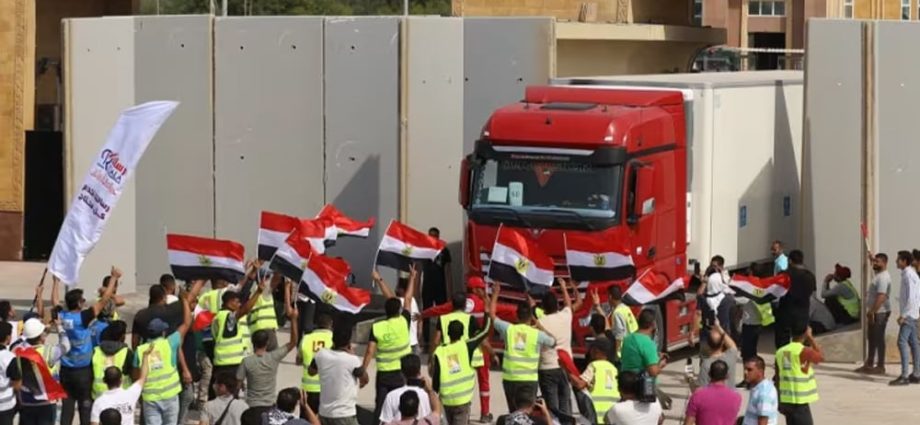At least 4,385 killed, including 1,756 children, in Israeli strikes on Gaza
The United Nations is hoping a second convoy of trucks will be sent into Gaza on Sunday
At least 4,385 people have been killed in the Gaza Strip since Israel began bombarding the Palestinian enclave, including 1,756 children, the Hamas-controlled health ministry said Saturday.
The ministry said another 13,561 people had been wounded in the Israeli strikes, which began on October 7.
The humanitarian situation in the Gaza Strip is “catastrophic,” five United Nations agencies said Saturday, calling for more international help as conditions deteriorate in the densely populated coastal enclave.
Their statement came as Israel said it would step up its strikes in Gaza to increase pressure on Hamas, and its senior officers warned troops to be ready to enter the besieged Palestinian territory.
Since shock Hamas attacks on Israel on October 7 left 1,400 dead, Israel has launched devastating air and ground bombardments of Gaza. The Hamas authorities say 4,385 people have died.
The statement by the UN agencies came as the first aid trucks arrived in Gaza from Egypt Saturday.
“More than 1.6 million people in Gaza are in critical need of humanitarian aid,” said the statement from agencies including the World Health Organization (WHO) and UNICEF, the children’s agency.
“Children, pregnant women and the elderly remain the most vulnerable. Nearly half of Gaza’s population are children,” it added.
“Gaza was a desperate humanitarian situation before the most recent hostilities,” it added.
“It is now catastrophic. The world must do more.”
The other three agencies to sign the statement were the World Food Program, the development agency UNDP and the UNFPA, the population fund.
Since the Hamas attacks on Israel on October 7, which left 1,400 dead, Israel has launched devastating air and ground bombardments of Gaza. The Hamas authorities say 4,385 people have been killed.
Israel has also massed tens of thousands of troops and hundreds of tanks along the Gaza border for a widely anticipated ground invasion.
“We have to enter the next phase of the war in the best conditions, not according to what anyone tells us. From today, we are increasing the strikes and minimizing the danger,” military spokesman Admiral Daniel Hagari told a press conference.
His comments came hours after the first international aid to reach Gaza since October 7 crossed the border from Egypt into the besieged Palestinian territory.
In Israel, military commanders visited frontline units on Saturday.
“Gaza is densely populated, the enemy is preparing a lot of things there — but we are also preparing for them,” chief of staff Lieutenant General Herzi Halevi told one infantry brigade on a visit.
The United Nations is hoping a second convoy of trucks will be sent into Gaza on Sunday
The United Nations is hoping a second convoy of trucks will be sent into Gaza on Sunday under a light inspection system that will allow relief deliveries to scale up into next week, its humanitarian chief said.
A first convoy of 20 trucks arrived in Gaza through the Rafah crossing with Egypt on Saturday, but efforts to deliver supplies to the besieged enclave have been held up by Israeli demands to verify aid.
The 20-truck convoy was announced by US President Joe Biden following a trip to Israel on Wednesday and was not subject to inspection of the kind that officials say will be needed for continuous deliveries.
“I’ve been hearing this afternoon – but we’re in negotiation on it right now – that we may get another convoy tomorrow, maybe even slightly bigger, 20 to 30 trucks,” UN aid chief Martin Griffiths said in an interview on the sidelines of a conference about Gaza in Cairo.
“It’s incredibly important that there is no gap in the aid going across the border,” he said. The UN says 100 trucks daily are needed to meet essential needs in Gaza, where Israel has imposed a “total siege” as it bombards the enclave in retaliation for a deadly incursion by Hamas militants.



